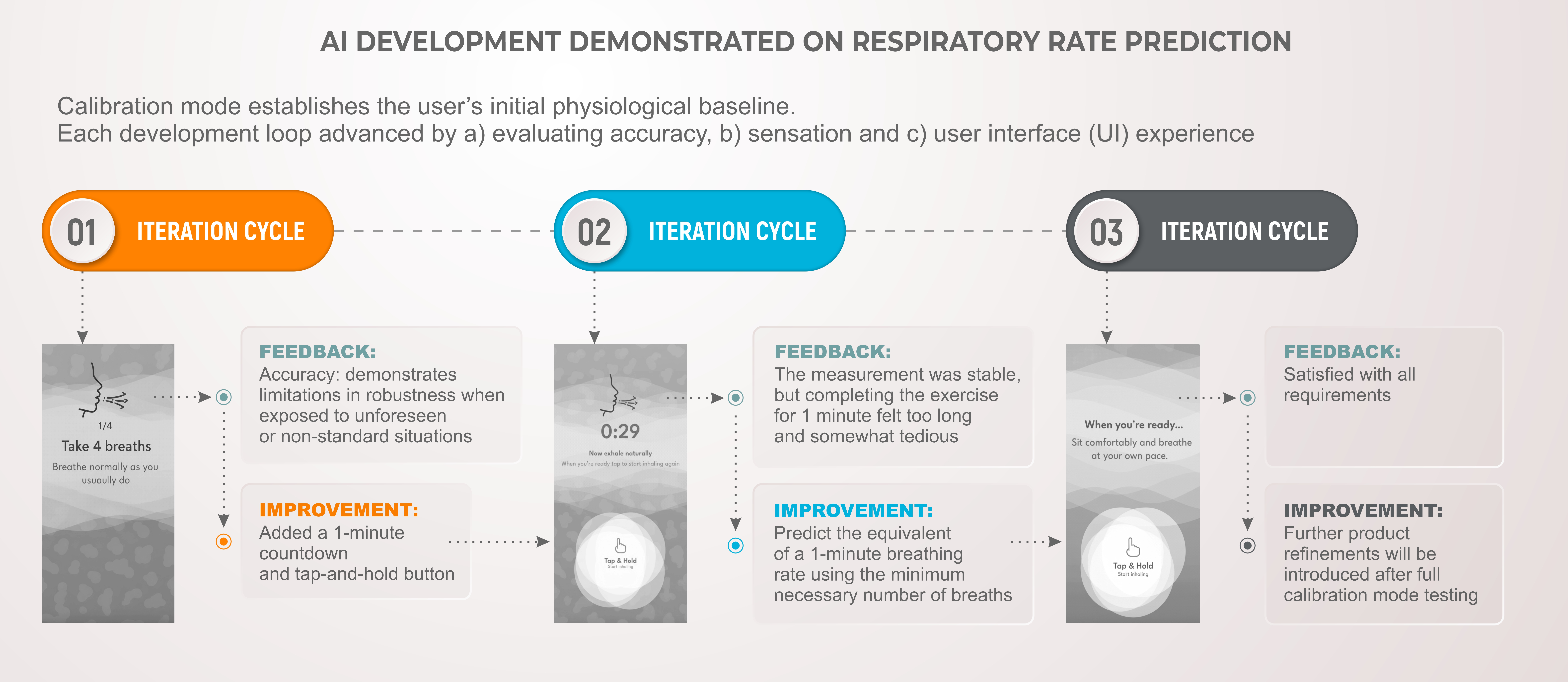To deliver the core value of the product—understanding the condition of the respiratory system and its impact on mental health—I designed a user journey loop. The loop follows a simple structure: users record their breathing samples, define their issues and goals, and then practice guided breathing. After each session, the application analyzes their breathing, compares it with their baseline data, and provides actionable insights (Pic. 1, left).
The loop begins with onboarding, where users answer questions and calibrate their device. This creates an initial snapshot of their respiratory condition and establishes a personalized "ideal" breathing signal—how someone with their profile should breathe to feel well. During practice sessions, actual breathing signals are compared against this ideal pattern, with real-time feedback guiding users on where and how to improve (Pic. 1, right).
The development process was iterative. The first version of the product was deliberately kept simple and evaluated across three dimensions: accuracy, user interface, and overall experience. Each new iteration addressed identified issues and refined the system (Pic. 2).
The development process involved multiple teams: Data team, Development team, Product team, Design team and Management team for data gathering, testing, and feedback.
I chose to split the implementation plan by functionality rather than by teams because of
a) collective tasks - some activities, such as data gathering, required joint effort across several teams
b) Flexible ownership - certain tasks, like model deployment, could be completed by either the Development or Data team, depending on availability.
The process was structured into three major milestones, with additional time reserved for testing and refinement:
1. Q1 Preparation: Vendor selection, data pipelines, application design, and initial data collection.
2. Q2 ML Development: Active analysis of gathered data, accurate calculation of respiratory indicators, and creation of personalized ideal breathing patterns.
3. Q3 User-Facing Metrics: Comparing ideal and actual breathing signals, mapping them to user goals and symptoms, and delivering meaningful insights.
4. Q4 Final Phase: Beta testing, improvements, and preparation for MVP release (Pic. 3)
Breethly
Head of Data and AI
Feb 2024 — Jul 2025



